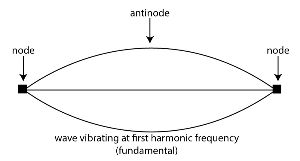I am unclear that when a stretched string oscillates , does it oscillate in its fundamental or in its overtones. And I want to know whether there are any instances where a stretched string oscillate in one of its overtones as its natural frequency?
-
$\begingroup$ Are you just asking about a stretched string of uniform density, eg a guitar string? You can get "interesting" effects with non-uniform strings. $\endgroup$– PM 2RingCommented May 3, 2021 at 9:11
-
2$\begingroup$ Of course, it's easy to make a string vibrate at a higher harmonic by dampening it. See en.wikipedia.org/wiki/String_harmonic $\endgroup$– PM 2RingCommented May 3, 2021 at 9:13
-
2$\begingroup$ Related: Why are the harmonics on a string controlled by where we pluck it? and Why do harmonics occur when you pluck a string?. $\endgroup$– PhilipCommented May 3, 2021 at 9:49
-
$\begingroup$ @PM2Ring No, I am asking about a normal string with no fretboard( like a sonometer string) with no dampening. So when its plucked does it vibrate in its fundamental. (if the length of the string= L and the wavelength of the transverse wave in the string= λ) then, λ=2L $\endgroup$– donthababakkaCommented May 3, 2021 at 11:06
-
$\begingroup$ You should edit that info into your question. But in that case, gandalf61 has basically answered your question. $\endgroup$– PM 2RingCommented May 3, 2021 at 11:17
1 Answer
A string played on a musical instrument will oscillate in a mix of its harmonics, although its fundamental frequency will usually be the loudest single component. The exact mix of harmonics will depend on whether the string is plucked, bowed or struck with a hammer; the place on the string where it is plucked, bowed or struck; and the force with which it is plucked, bowed or struck (the "velocity"). In addition, the body of the instrument (known as its "sound box") will resonate with certain frequencies and amplify them, changing the quality or "timbre" of the note.

